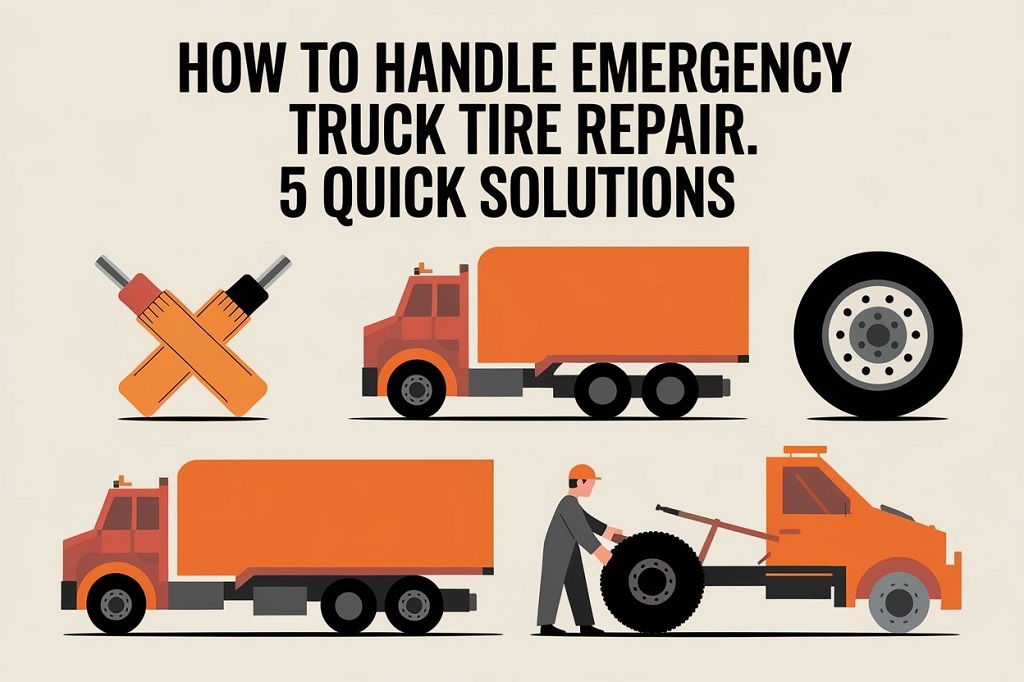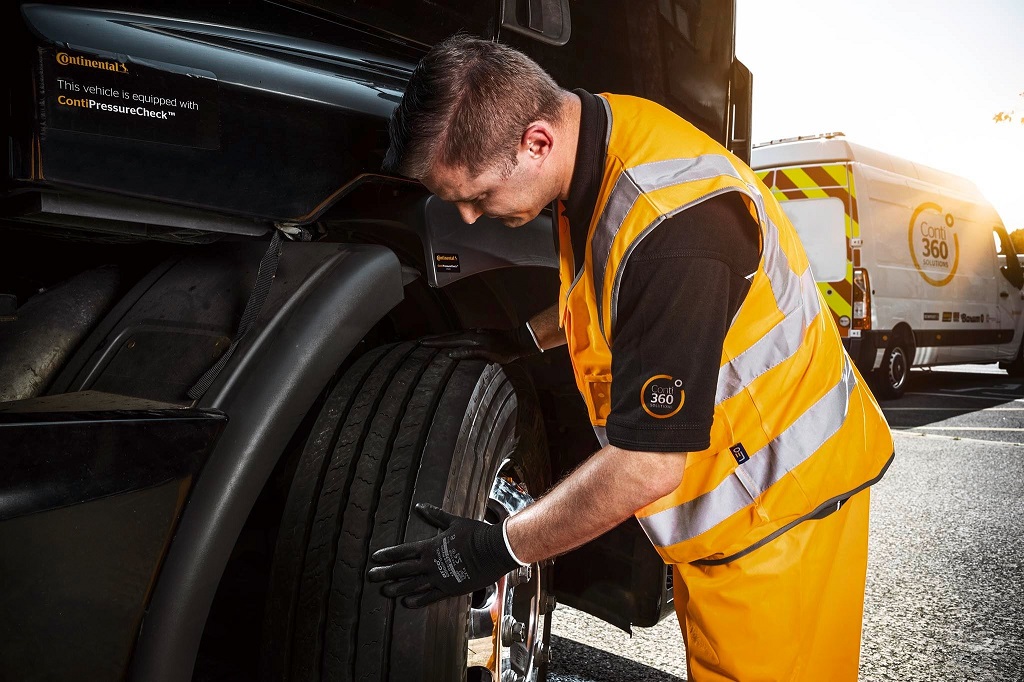A flat tire on a truck is not just an inconvenience; it can be a major disruption to your schedule, not to mention a potential safety hazard. Knowing how to handle emergency truck tire repair can save you time, money, and a lot of stress. Here are five quick solutions that can get you back on the road.
The Spare Tire Swap: Your First Line of Defense
The most straightforward solution for a flat tire is to swap it out with your spare. Most trucks come equipped with a spare tire, and the process of changing it is relatively simple, even for those without much mechanical experience.
Remember:
- Make sure your truck is parked on a level, stable surface and the parking brake is engaged.
- Use the correct tools to loosen the lug nuts and lift the truck with a jack.
- Once the flat tire is removed, mount the spare tire and tighten the lug nuts securely.
- Don’t forget to stow the flat tire properly and get it repaired or replaced as soon as possible.
While replacing a tire with a spare is a temporary fix, it’s crucial to address the flat tire promptly. Continuing to drive on a spare for extended periods can affect your truck’s handling and potentially lead to further tire damage or even an accident.
Tire Sealants: A Quick Fix for Minor Punctures
For minor punctures, tire sealants can be a lifesaver. These products are designed to seal small holes in your tire, allowing you to continue driving until you can reach a repair shop.
How to use tire sealants:
- Remove the object that caused the puncture, if possible.
- Attach the sealant canister to the tire valve and inject the sealant into the tire.
- Inflate the tire to the recommended pressure and drive slowly for a few miles to allow the sealant to distribute and seal the puncture.
Tire sealants are a convenient and effective solution for small punctures, but they are not a permanent fix. It’s essential to get your tire repaired professionally as soon as possible. Also, remember that tire sealants are not suitable for large punctures or sidewall damage.
Tire Plugs: A Reliable Solution for Small Punctures
Tire plugs are another option for repairing small punctures. They are inserted into the hole in your tire to create a seal and prevent air from escaping. While tire plugs require a bit more skill and tools than tire sealants, they can provide a more durable repair.
Steps to plug a tire:
- Locate the puncture and clean the area around it.
- Use a reamer tool to enlarge the hole slightly and prepare it for the plug.
- Insert the plug into the hole using a plug insertion tool.
- Trim the excess plug material and inflate the tire to the recommended pressure.
Tire plugs can be a reliable solution for small punctures, but it’s crucial to have them installed correctly to ensure a proper seal. If you’re not comfortable plugging a tire yourself, it’s best to seek professional assistance.
Roadside Assistance: Professional Help When You Need It
If you’re unable to repair your tire yourself or the damage is too severe, roadside assistance can be a valuable resource. Many trucking companies and insurance providers offer roadside assistance programs that can provide tire repair or replacement services on the spot.
To access roadside assistance:
- Contact your provider and provide your location and details about the tire issue.
- A service technician will be dispatched to your location to assess the situation and provide the necessary assistance.
Roadside assistance can save you time and hassle, especially if you’re in a remote location or unfamiliar with tire repair. However, it’s important to be aware of the costs associated with roadside assistance and to factor those into your decision.
Preventive Maintenance: The Best Way to Avoid Tire Trouble
The best way to handle emergency truck tire repair is to avoid it altogether. Regular tire maintenance can help prevent flat tires and other tire-related issues.
Key preventive measures:
- Check your tire pressure regularly and ensure they are inflated to the correct specifications.
- Inspect your tires for signs of wear and tear, such as cuts, cracks, or bulges.
- Rotate your tires regularly to ensure even wear.
- Have your tires balanced and aligned periodically.
By taking proactive steps to maintain your tires, you can significantly reduce the risk of experiencing a flat tire and the associated downtime and inconvenience.
Remember, a flat tire can happen to anyone, but being prepared and knowing how to handle the situation can make all the difference. By following these quick solutions and practicing preventive maintenance, you can keep your truck rolling and minimize the impact of tire trouble on your journey.
Additional tips for handling emergency truck tire repair:
- Always carry a tire repair kit that includes essential tools and supplies, such as a jack, lug wrench, tire sealant, tire plugs, and an air compressor.
- Familiarize yourself with the process of changing a tire and using tire repair products before you need them.
- If you’re unsure about how to repair your tire or the damage is severe, don’t hesitate to seek professional assistance.
- Stay calm and focused during the repair process, and prioritize safety at all times.
By being prepared and proactive, you can turn a potentially stressful situation into a minor inconvenience and get back on the road with minimal disruption. Remember, your safety and the safety of others on the road depend on your ability to handle emergency truck tire repair effectively.





